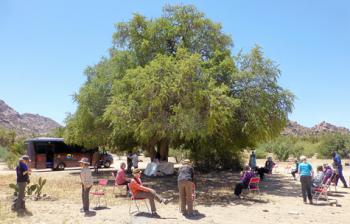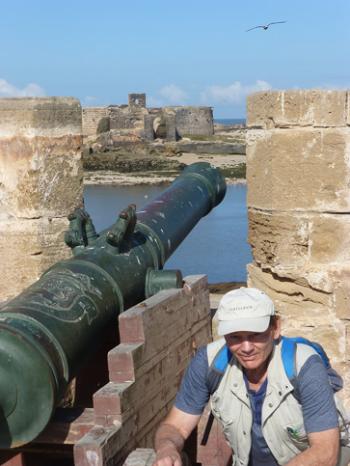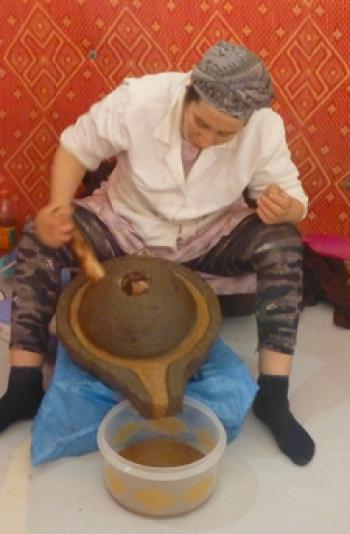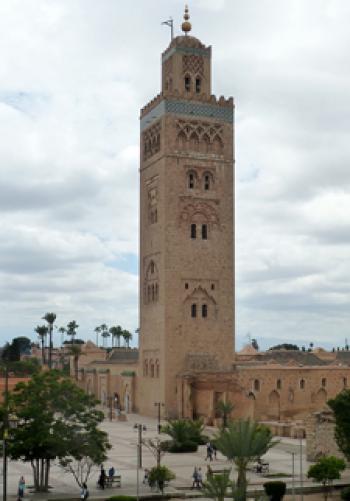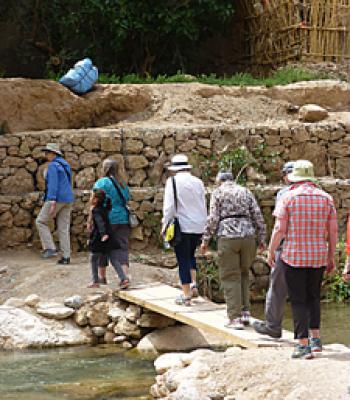Morocco in depth (Third of three parts)
This item appears on page 41 of the September 2019 issue.
In the second part of this series, I described the first half of my hosted April 2019 journey around Morocco with the small-group adventure-tour operator ElderTreks. This month, I’ll share highlights from the second part of our trek, from the dunes of the Sahara back to Casablanca. First, however, I wish to share a few thoughts about shopping in Morocco.
Morocco shopping mania
On most of my overseas excursions, I tend to contribute very little to the local economies by way of shopping. Like many globetrotters, my focus is on collecting experiences. My pre-trip research indicated that Morocco might have me deviating a bit from that norm, but I must confess to being dead wrong. Instead, I deviated a lot.
I was not alone in acquiring more than intended, as other tour members also were entranced by the wide range of unusual offerings we found in the bazaars and souks we encountered in virtually every city as well as on specialty visits. In my case, I kept coming across unusual health-related items that I could not resist taking home.
My list of acquisitions included the following: several scarfs (pashmina, silk, rayon, cotton), a burled-Thuya-wood box, petrified-fossil-rock pendants and tray, a fine silver filigree bracelet, an etched copper ring and a fine leather envelope purse as well as saffron, argan oil, avocado oil, fig seed oil and almond oil.
Sahara to Tafraout
After an overnight in the Sahara near Merzouga, our group traveled northwest toward Tinghir and visited alluring Todra Gorge, nestled at the end of a long, lush, green valley accented by mud-brick houses and endless groves of palms. We enjoyed a stroll along the pristine river lined by sheer, 1,000-foot-high rock walls.
The following day, we visited the equally if not more impressive Dades Gorge, with its unique rock formations and colors.
After an overnight in Ouarzazate, famed as Morocco’s primary movie-making center, we toured the legendary ksar of Aït-Ben-Haddou, the location utilized in the filming of “Lawrence of Arabia” and a noteworthy list of other silver screen box office hits. Some of our group were hoping to enhance their cultural experience by being movie extras. Alas, no filming was going on during our visit.
A hike to the top of the primary kasbah within the ksar (walled town) provided great views of the grounds, river setting and surrounds. I had no trouble imagining an out-of-control Lawrence charging up the riverbed on his steed at full throttle.
Traveling west through the Anti-Atlas range, we encountered our first argan trees in the relaxing city of Taroudant, which is surrounded by remarkably well-preserved red-mud walls. There, a surprise was in store. Our accommodation was a beautiful, walled, French-villa oasis of landscaped gardens, pools and artfully decorated rooms. It was pure heaven.
Meeting the hospitable French owner, we were able, during our open-air, poolside candlelight dinner, to arrange a private behind-the-scenes tour of the complex, including its kitchens, its fruit and vegetable gardens, a site where mud bricks are made and some adjoining properties.
The animal-loving owner is also involved in several community projects, including building a sanctuary for donkeys that retire from lives of heavy labor.
After a long day of travel through the Anti-Atlas via the Kerdous pass, we finally arrived in Tafraout, a small, quiet city far from the traditional tourist route. We spent two nights in a historic hotel overlooking the city, with mountain views.
The day after our arrival, we hiked through a nearby village and enjoyed a picnic lunch under the spread of a large argan tree. We then had the luxury of a free afternoon to explore on our own.
Essaouira to Marrakech
The truth is I was becoming anxious to get back to the coast, so I was happy when we departed westward to Agadir and on to Essaouira for two nights.
We arrived in Agadir in time for a seaside lunch, but I was less than impressed with this huge seafront enclave designed to cater to budget-oriented Northern Europeans on packaged holidays.
Essaouira, however, proved to be pure joy — my favorite stop on the trip. Our user-friendly hotel was on the beach, and we were only about a half-mile walk down the beach from the fishing port, old fortifications and an archway entrance to the well-organized, easy-to-navigate medina. On our second day, we explored the sites on a guided walking tour then on our own.
The next morning, after an interesting inspection of the Argan Oil Cooperative, operated entirely by women, where we saw how the sought-after oil is produced, we were on the road to Marrakech. Our time in this lovely, orderly, 12th-century city went by quickly, with visits to two small, ornate palaces and the beautiful Majorelle Garden, once owned by Yves Saint Laurent, who was a passionate supporter of Marrakech.
We also had a horse-drawn calèche (carriage) ride through the city plus ample time to visit the famed Djema el-Fna, the huge central square with its adjoining souks, for last-chance shopping. Overcrowded tourist madness is the way I might describe this happening venue, especially in the evening.
A short walk from our hotel toward the city center, I discovered a gelato parlor offering 30 flavors, which guaranteed a purposeful late-evening stroll of indulgence both nights. The chocolate hazelnut was a “must have.”
Departing Marrakech, we returned for a final overnight to Casablanca, where our exciting journey around Morocco had begun.
Reflecting on this comprehensive and at times whirlwind adventure on my way to the airport the following morning, I realized just how much of the country we had experienced and that it would take a little time for it all to fully sink in.
This 18-day tour, “Morocco – Kasbahs, Berbers & the Sahara,” begins and ends in Casablanca. Excluding international air but including all meals, it costs $4,995 per person, double occupancy (single supplement, $995). For more information, contact ITN advertiser ElderTreks (Toronto, ON; 800/741-7956, www.eldertreks.com).
Contact Randy at 80 America Way, Jamestown, RI 02835; 401/560-0350, randykeck@yahoo.com.

